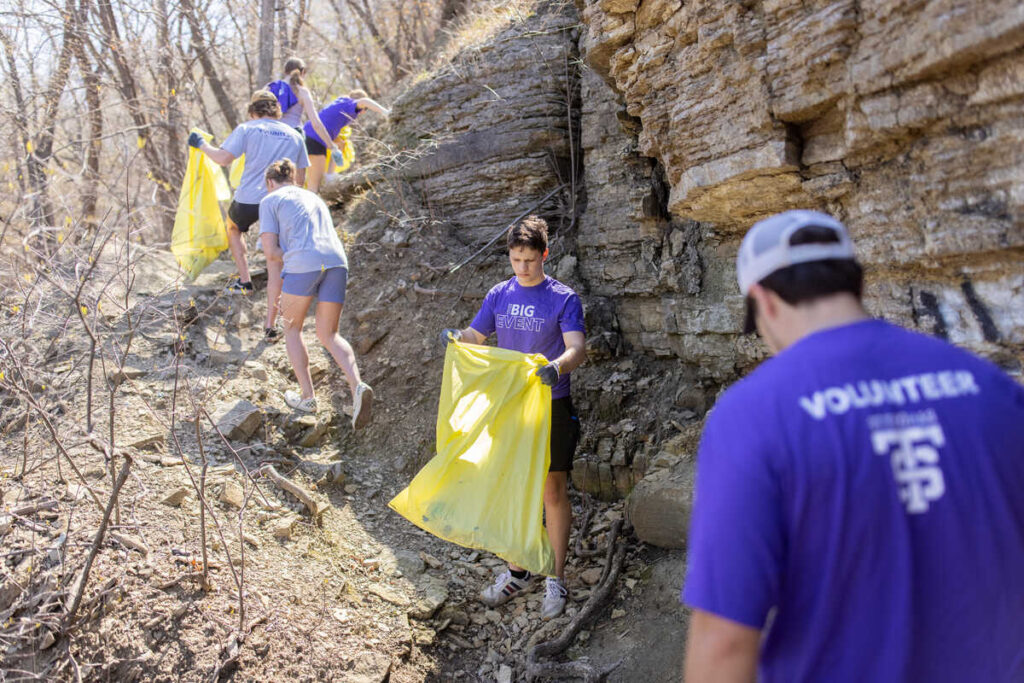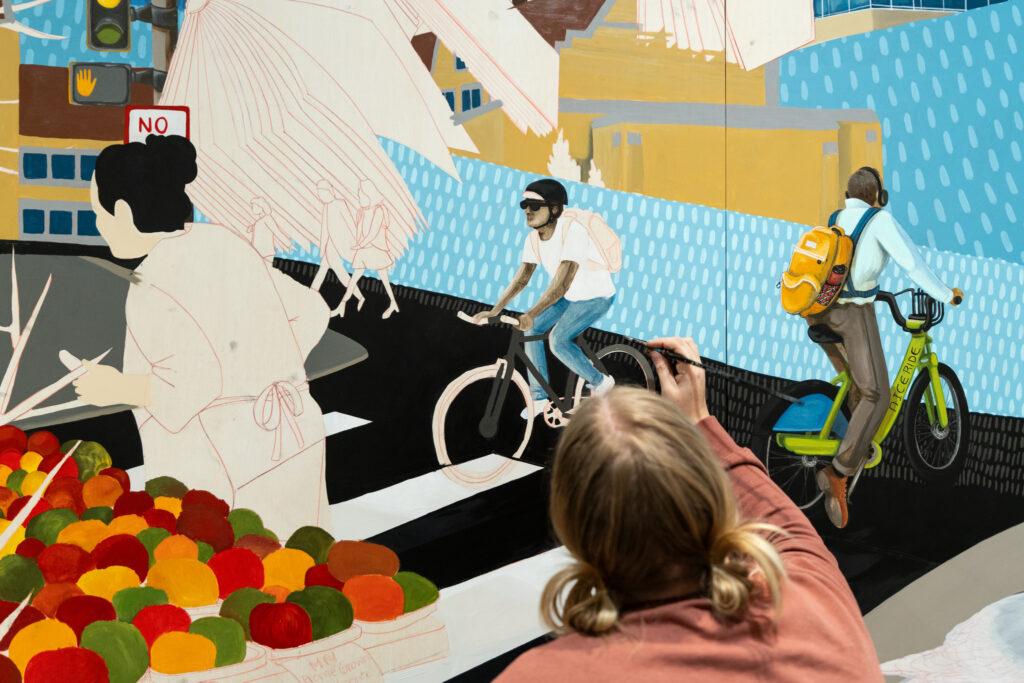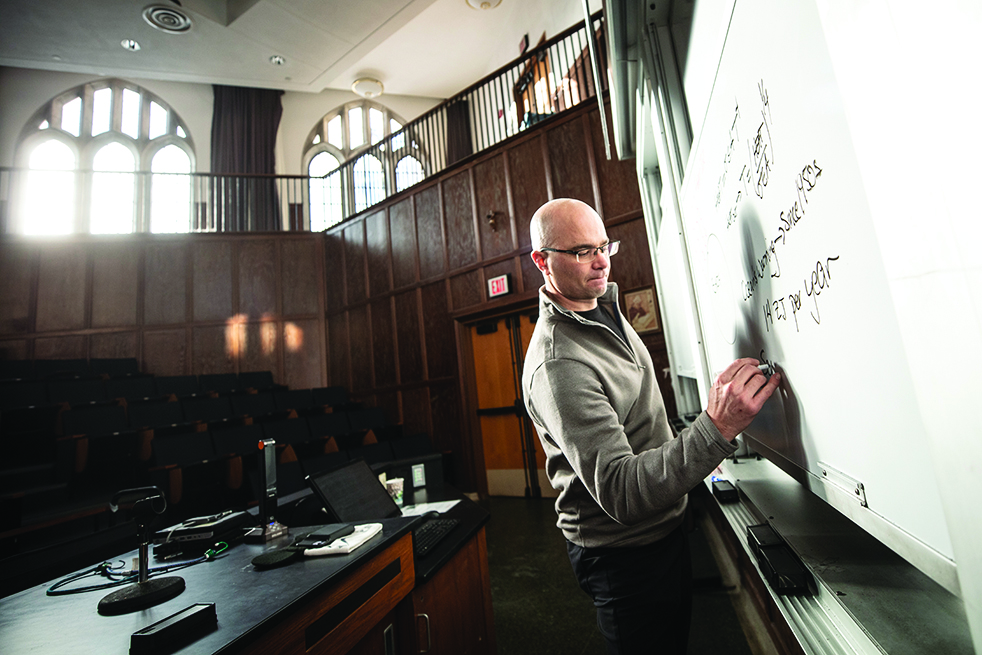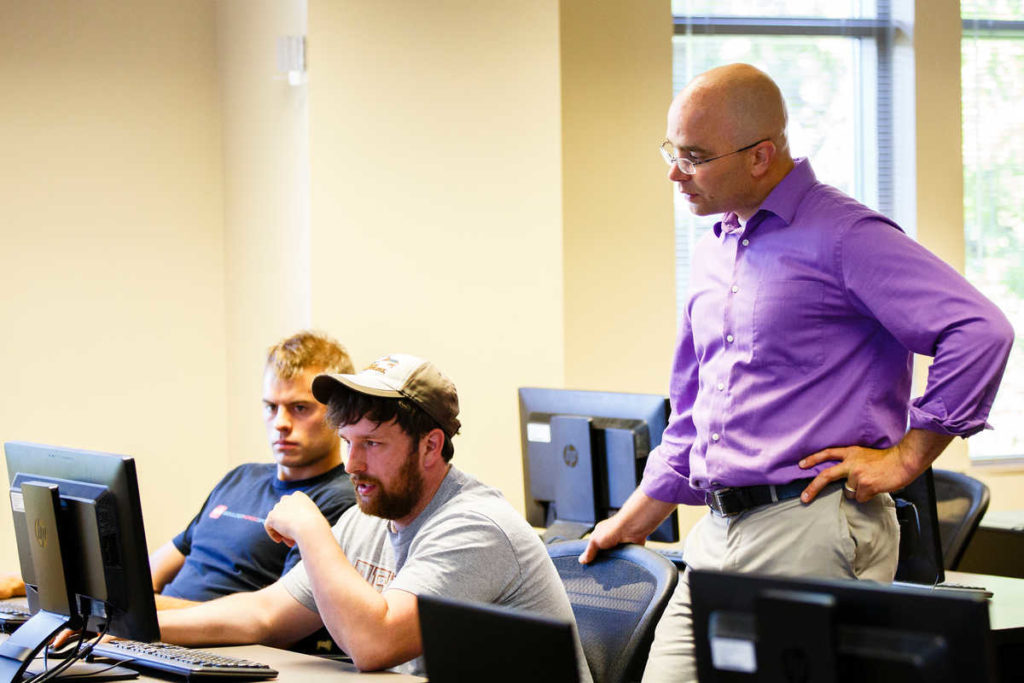In 2008, Father Dennis Dease signed the American College and University Presidents’ Climate Commitment along with hundreds of college and university presidents from across the country; and in doing so made a public declaration of the University of St. Thomas’ commitment to reducing its impact on the environment.
The Anderson Student Center will be a reflection of that commitment. As the ASC inches closer to its January 2012 opening, many efforts have gone into its design and construction to help ensure the environmental sustainability of the facility.
There are a number of rating systems that measure the sustainability of buildings. According to Dan Young Dixon, Opus’ lead architect for the ASC, the building will be assessed by the U.S. Green Building Council’s LEED -- Leadership in Energy and Environmental Design -- certification system.

The Anderson Athletic and Recreation Complex as seen through the atrium window wall of the Anderson Student Center.
“The LEED certification that we are pursuing in the ASC is an important statement that reflects the care we have for our environment and for future generations,” said Mary Ann Ryan, St. Thomas executive director of campus life. “There has been a subcommittee working on the LEED certification in the ASC consisting of student affairs, dining services, physical plant and, of course, Opus representation.”
LEED certification is granted at four levels that vary based on the number of environmentally-conscious efforts that go into a facility’s design and usage. The ASC is on track to earn a silver certification. “We’re shooting for silver,” said Young Dixon, “and I think we’ll find that we’ll be at the high end of silver once the building is certified.”
To earn certification, a building builds up points in each of five categories: Sustainable sites, water efficiency, energy and atmosphere, materials and resources, indoor environmental quality, and innovation and design process.
To earn points in the sustainable sites category, attention to detail goes back to the demolition of O’Shaughnessy Hall in 2010. According to Young Dixon, it was important that the materials from O’Shaughnessy be recycled to lower the amount of materials to be sent to landfills “All the stone, all the steel, all the asphalt from the parking lot – all those materials were collected and recycled or reused,” he said. Additionally, much of the Kasota stone that faced the building was given to neighbors for landscaping projects.
Another important consideration for the sustainable sites category is storm water management. Over the summer, a large underground retention system was dug into the lower quad to help control the amount of runoff being released into the city’s storm sewer system. While the project required the elimination of several mature trees on lower quad, it will have a positive environmental impact for the community long-term.
“The storm water management system is kind of like an urban equivalent of what you might see in a subdivision where they have a large retaining pond,” he said. “It will alleviate the pressure on the city’s storm sewers, as well as get rid of the silt and all the heavy elements in the water before it infiltrates into the aquifer.”
In addition to a sustainable site, the facility can earn points with its water efficiency. According to Young Dixon, there are two different types of water usage to control: human consumption inside the building and irrigation outside.
To help manage the human consumption, appliances and fixtures were selected based on the amount of water flow they allowed. Outside, careful consideration was given to plant selection in the landscape design. “St. Thomas already has a landscape theme that includes many native and drought-resistant plants, so we’ll be following that,” said Young Dixon. With a concrete plaza designed for the quad side of the building, it reduces the amount of turf that would also require irrigation.
As a result of these efforts, the ASC will reduce its water consumption compared to that of a comparable facility by 40 percent.
To help meet the criteria of the energy and atmosphere category, as well as the environmental quality category, the ASC will house a computerized building management system. While the system monitors air quality and temperature, it will run efficiently and utilize a minimal amount of energy. It will also help reduce energy consumption by powering down systems that are servicing area that aren’t in use.
“A big part of it will be the ability to control the temperature in the building. Rather than having one or two thermostats, it has a lot more sensors and a lot more control over that,” said Young Dixon. “It will also control lighting in conference rooms and spaces that aren’t ordinarily occupied so that they automatically shut off when the rooms aren’t in use.”
The environmental quality category also requires that materials used contain low or no volatile organic compounds (VOCs) that can contribute to poor air quality. “All the materials that we’re looking at will have low or no VOCs, so the paints will have no VOCs, the floor coverings, the carpets, all the adhesives will be low or no VOCs. There won’t be any off-gassing or dangerous chemicals released into the air.”
The last category with LEED-certification requirements is innovation design and process. To help meet the criteria in this category, Opus has included a LEED professional in the design process looking at the building from the beginning for opportunities to be sustainable. Additional points can be earned for maximizing open space. “We formed the building to capture all the new quad space,” said Young Dixon. “We enhanced and increased the open area on campus, turning it from a parking area to a usable public space.”
The ASC can also earn points for incorporating a green educational program in the building. According to Ryan, this is an important criterion for the facility and its users, “We will have a display on the first floor next to Tommie Central where people will learn more about the LEED certification and energy use in the ASC.”
Once the facility opens in January, it will be a year before its LEED certification level is determined. Regardless of the USGBC’s decision on the certification, though, Young Dixon is sure of one thing: “It’s an amazing building – an incredible commitment that St. Thomas has made to the students.”
To learn more about sustainability efforts happening across campus, visit Sustainability at UST.
To learn more about LEED certification, visit the USGBC.
For an interactive map of the new Anderson Student Center’s floor plans, visit the Opening Doors Campaign.






